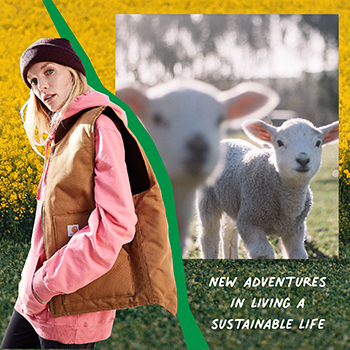A couple weeks ago I spent some time attending the South by Southwest virtual conference. While of course I missed the vibe and in-person experience I was hoping for at SXSW (and the wonderful Austin restaurant scene!), I was amazed by how many more seminars I was able to attend thanks to how easy it was to simply click from one to the next.
As a result, my head is positively swimming with new insights!
One overarching theme I discovered was technology. How are we harnessing tech as a force for positive change in the world? Leaders from every industry, including the retail and promotional worlds, are grappling with big questions about their part in the big picture and how it plays out for everybody. It’s often through these same technologies that we see trends develop as ideas and aesthetics come together to become a movement.
Among other things, technology is being used to create micro-communities built around shared interests rather than geography. Twitch addresses this with the gaming audience while Peloton does it for exercise, fostering connection and interactivity through tags, virtual high-fives and trainers who entertain as much as encourage.
 The cottagecore trend, which hearkens back to simpler times, has technology to thank for its current popularity. It got its start a few years ago as tagged posts flooded across Instagram, Tumblr and TikTok. Then the pandemic of 2020 developed and the resulting lockdowns firmly cemented the trend’s position as one to watch and as a community that’s here to stay.
The cottagecore trend, which hearkens back to simpler times, has technology to thank for its current popularity. It got its start a few years ago as tagged posts flooded across Instagram, Tumblr and TikTok. Then the pandemic of 2020 developed and the resulting lockdowns firmly cemented the trend’s position as one to watch and as a community that’s here to stay.
To fully immerse in the cottagecore movement, followers seek clothes that last, clothes that are easier on the environment to produce, and clothes that comfortably go with them on their outdoor adventures.
These same attributes also apply to hipsteading, a trend we’ve mentioned before – a movement of younger generations working to create self-sufficient farms at home. This answers the need to have some level of control on the world around you and where your food comes from, encouraging growing and cooking your own food with an emphasis on outdoor gardening as well as growing plants indoors. It invites more of what’s outside into your home and gives you more reasons to get outside and get your hands into good, clean earth.
 These are ways of life that combine a desire to make a comfortable and cozy space for yourself at home with a strong eye toward living more sustainably. In the last year the cottagecore movement has grown to be more inclusive as it embraces people of color and to be more conscious of how we behave as consumers. As InHabitat’s Teresa Bergen puts it: “Upcycling, thrifting, garage sales and flea markets are all part of the lifestyle.”
These are ways of life that combine a desire to make a comfortable and cozy space for yourself at home with a strong eye toward living more sustainably. In the last year the cottagecore movement has grown to be more inclusive as it embraces people of color and to be more conscious of how we behave as consumers. As InHabitat’s Teresa Bergen puts it: “Upcycling, thrifting, garage sales and flea markets are all part of the lifestyle.”
There’s quite a lot of clothing that can fit this bill. Recycled tri-blend tees from Allmade and the District Re-Tee® are built from the ground up to be shirts you’ll want to wear and keep, as well as being thoughtful in how they’re made. Backpacks and bags from Cotopaxi are durable and made from repurposed nylon fabric scraps – and it doesn’t hurt that the bright colors make each one look like a unique work of art!
 The Everyday Jackets and Vests from The North Face are perfect for keeping you warm and dry in any weather and are made from 100% recycled polyester, as are their Mountain Beanie and Classic Cap. Just a few examples of apparel that is crafted thoughtfully and built to last.
The Everyday Jackets and Vests from The North Face are perfect for keeping you warm and dry in any weather and are made from 100% recycled polyester, as are their Mountain Beanie and Classic Cap. Just a few examples of apparel that is crafted thoughtfully and built to last.
The movements that have built up around cottagecore and hipsteading may not share geography, but they do share an ideal for a more conscious future that makes us all neighbors in a global community. With Earth Day fast approaching and Arbor Day soon after, I don’t think there are better trends to illustrate our newfound focus on living more sustainably.
Next month we’ll continue talking about nature and how it nurtures us just as much as we nurture it. All those plants people are growing in their homes? They do a lot more than just look pretty. You’ll see what I mean — see you then!

